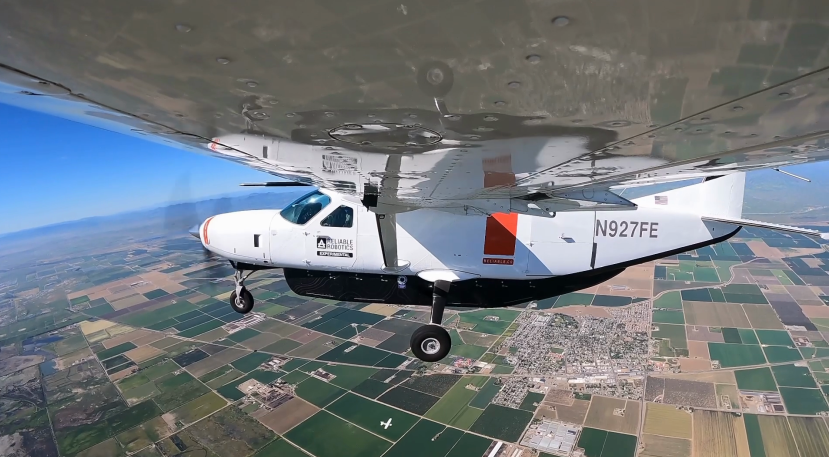
Reliable Robotics wants to automate piloting of the Cessna 208 Caravan cargo aircraft.
Reliable Robotics demonstrated autonomous takeoff, flight and landing of its retrofitted Cessna Caravan 208 aircraft for the U.S. Air Force during the Golden Phoenix readiness exercise May 9 at Travis AFB in California.
The remotely operated aircraft’s flight was automated from “end-to-end,” including taxiing, takeoff, climb out and landing, with a pilot on board monitoring and a remote pilot supervising from the company’s Mountain View, California, headquarters, Reliable Robotics CEO Robert Rose said in an interview with AAM Report.
Golden Phoenix is a large-scale readiness exercise hosted annually by Travis AFB.
“The aircraft auto-taxied out to the hold short line where there were some tower interactions. Once we got the permission to take off, we entered the runway, took off, and basically did a VFR [visual flight rules] lap in the pattern,” Rose says. “The Caravan automatically landed and then automatically left the runway and taxied back to a predefined location. From there, control was handed back to the onboard pilot and he then brought the plane back.”
“The reason this exercise was so significant is that, really for the first time, it took commercial solutions, and without modification, adapted them for military use,” adds David O’Brien, the company’s senior vice president for government solutions. “This was their opportunity to see how this system would operate in their environment, on their base, with their personnel, under timelines that they dictated, and that’s a pretty significant thing to occur.”
Following the flight, Reliable Robotics made the retrofitted Cessna Caravan—fitted with the company’s continuous autopilot engagement system—available for Air Force personnel to enter and examine the interior firsthand, Rose said. The company also brought a representative mockup of its control center to the site in a trailer, which allowed service members to interact with a virtual simulation of the system.
The demonstration flight was separate from a Phase III Small Business Innovation Research contract issued to the company by the U.S. Air Force to demonstrate flight performance of its remotely piloted system in different operating environments. Under that contract, the startup is looking to ensure that its autopilot system “is able to comprehend all sorts of flight environments, and we also intend to refine it so we get greater levels of fidelity in autonomous flight,” O’Brien said.
“The Air Force is all over this technology,” O’Brien says. “The ability to fly autonomously is of high interest to them, because they can increase aircraft utilization, conduct more missions and move more cargo and fuel around the world, so they can reduce crew fatigue and other issues they face during deployments.”
Reliable Robotics says it also recently received a contract from the service to study the automation of large, multi-engine jets.
“We have an opportunity to look at a much larger platform and explore different flight dynamics and different aircraft configurations for the Air Force to gauge,” O’Brien says. “They are really excited to increase their ability to fly more planes with reduced crew workload and get much more efficient aircraft usage than they get now.”
The company continues to work with the FAA toward a supplemental type certificate (STC) for its retrofitted Cessna Caravan 208 modified with the continuous autopilot and navigation system. Eventually, it hopes to certify the system on other aircraft types as well.
“We’re in meetings with the FAA, exchanging documents and answering whatever questions they have,” Rose said of the progress toward STC. “We’re hoping to achieve some significant milestones later this year.”





